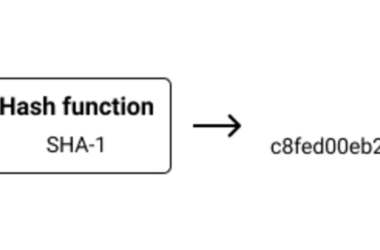Revolutionizing DevOps with Ansible: The Future of Automated Infrastructure
Introduction
In the rapidly evolving world of software development and IT operations, DevOps has emerged as a transformative approach to bridge the gap between development and operations teams. At the heart of this transformation lies automation — the key to accelerating delivery, improving reliability, and fostering innovation. Among the myriad of tools available, Ansible stands out as a visionary solution that redefines how infrastructure and applications are managed.
Why Ansible in DevOps?
Ansible is an open-source automation engine that enables DevOps teams to automate configuration management, application deployment, and orchestration with simplicity and power. Its agentless architecture, declarative language, and modular design make it uniquely suited for modern DevOps pipelines.
Agentless Architecture
Unlike other configuration management tools that require agents installed on target machines, Ansible communicates over SSH or WinRM, reducing overhead and security risks. This design choice accelerates adoption and simplifies maintenance.
Human-Readable Playbooks
Ansible uses YAML-based playbooks that are easy to read and write, enabling collaboration between developers, operations, and even non-technical stakeholders. This transparency fosters a culture of shared responsibility and continuous improvement.
Core Concepts of Ansible for DevOps
Inventory
The inventory defines the hosts and groups of hosts on which Ansible operates. It can be static or dynamic, allowing integration with cloud providers and container orchestration platforms.
Playbooks
Playbooks are the heart of Ansible automation, describing the desired state of systems through plays and tasks.
Modules
Modules are reusable units of code that perform specific actions, such as installing packages, managing files, or interacting with APIs.
Practical Example: Automating Web Server Deployment
Let’s explore a simple yet powerful example of using Ansible to deploy and configure an Nginx web server on a group of Ubuntu hosts.
---
- name: Deploy and configure Nginx web server
hosts: webservers
become: yes
tasks:
- name: Update apt cache
apt:
update_cache: yes
- name: Install Nginx
apt:
name: nginx
state: present
- name: Ensure Nginx is running and enabled
service:
name: nginx
state: started
enabled: yes
- name: Deploy custom index.html
copy:
content: "Welcome to Ansible-powered Nginx!
"
dest: /var/www/html/index.html
owner: www-data
group: www-data
mode: '0644'
This playbook demonstrates how Ansible can declaratively manage infrastructure, ensuring idempotency and consistency across environments.
Integrating Ansible into CI/CD Pipelines
Automation doesn’t stop at infrastructure. Ansible seamlessly integrates with continuous integration and continuous delivery (CI/CD) tools like Jenkins, GitLab CI, and GitHub Actions, enabling automated testing, deployment, and rollback strategies.
Example: Triggering Ansible Playbook from Jenkins
In Jenkins, you can add a build step to execute an Ansible playbook using the command line:
ansible-playbook -i inventory.ini deploy-nginx.ymlThis integration ensures that infrastructure changes are version-controlled, tested, and deployed automatically, reducing human error and accelerating release cycles.
Advanced Use Cases: Orchestration and Self-Healing Systems
Ansible Tower (now part of Red Hat Ansible Automation Platform) extends Ansible’s capabilities with a web UI, role-based access control, and advanced scheduling. This enables complex orchestration workflows, such as rolling updates, blue-green deployments, and automated remediation.
Imagine a self-healing system where Ansible monitors application health and automatically triggers recovery playbooks when anomalies are detected, embodying the future of autonomous infrastructure management.
Best Practices for Ansible in DevOps
- Modularize Playbooks: Break down large playbooks into roles for reusability and maintainability.
- Use Version Control: Store playbooks and inventories in Git to track changes and enable collaboration.
- Test Automation: Employ tools like Molecule to test Ansible roles and playbooks before deployment.
- Secure Secrets: Use Ansible Vault to encrypt sensitive data such as passwords and API keys.
- Leverage Dynamic Inventories: Integrate with cloud providers to manage ephemeral infrastructure dynamically.
The Vision Ahead
As AI and machine learning continue to evolve, the synergy between Ansible and intelligent automation will unlock unprecedented levels of operational efficiency. Predictive analytics could enable Ansible to proactively adjust infrastructure based on usage patterns, while natural language processing might allow teams to define automation workflows through conversational interfaces.
In this futuristic landscape, Ansible will not just be a tool but a strategic partner in crafting resilient, adaptive, and intelligent DevOps ecosystems.
Conclusion
Ansible is more than an automation tool; it is a catalyst for innovation in DevOps. Its simplicity, flexibility, and power empower teams to transcend traditional operational boundaries and embrace a future where infrastructure is code, deployment is seamless, and systems are self-managing.
By integrating Ansible into your DevOps practices today, you are not just automating tasks — you are pioneering the future of software delivery and infrastructure management.





